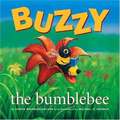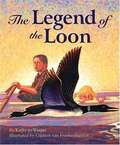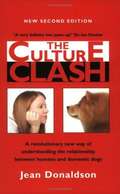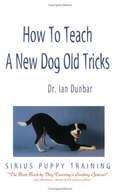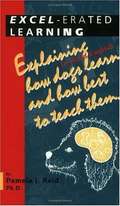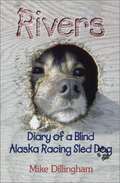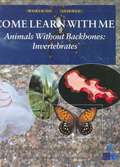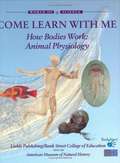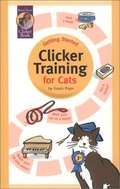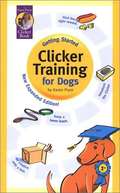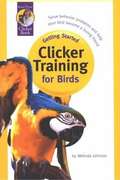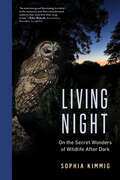- Table View
- List View
Buzzy the Bumblebee
by Denise Brennan-NelsonScientific facts suggest that bumblebees should not be able to fly. Documented studies indicate that a bumblebee's wing span is too small for its body weight. Fortunately, bumblebees do not know this. Well, that is, except for BUZZY! Buzzy is a fun-loving bumblebee. He loves to fly! One day Buzzy reads the startling and shocking "scientific fact" that he should not be able to fly and he begins to doubt himself. He tried to make his wings work by pumping with all of his might. But the words he had read were stuck in his head and now something wasn't right! Buzzy was stranded on top of a flower, longing to fly away. His heart still knew how but his head had forgotten the way. Buzzy desperately wants to get home to talk to his mom and dad. But how? He couldn't fly anymore! Come along on Buzzy's challenge-filled journey and discover what can happen when you BELIEVE!
The Legend of the Loon
by Kathy-Jo WarginThe Legend of the Loon, tells of a magical grandmother and her cherished relationship with her grandchildren. Trips to the forest with her reveal the wonders of nature, from winter's frost to the miracle of newborn fawns. She tells them of the dream-soul, "where all of the things you believe in and wish for come together like earth and water and sky." Telling stories by firelight, the grandchildren notice Grandmother Lom's reflection on the water. "She looked as if she was wearing the night and the stars on her back, the northern lights as a beautiful necklace, and a kindled flame in her eyes . . . " Written with the captivating poetry you've come to expect from author Kathy-jo Wargin and painted with mystery and wonder by illustrator Gijsbert van Frankenhuyzen, this tale is a perfect addition to your Legends collection as well as an enchanting introduction to the work of these legendary storytellers. Picture descriptions present.
Detective Dog and the Ghost
by Leslie McguireHooked on Phonics. Detective Dog is looking for a lost kitten and finds a ghost!
Mutt and Pup (HOP Book Companion 6--Hooked on Phonics)
by L Hungridge John MagineWhile HOP Companion Books can be used independently, this series of books has been designed as a supplement to Level 1 of the Hooked on Phonics® * Learn to Read program. When to read: Read after HOP Book 9, Dog Bug. Phonics practice: Words with short a, i, o, and u sounds, such as hat, pig, fox, and fun.
Pig Fun (HOP Book Companion 7--Hooked on Phonics)
by Leslie Mcguire Mitchell RoseWhile HOP Companion Books can be used independently, this series of books has been designed as a supplement to Level 1 of the Hooked on Phonics® Learn to Read program. Find out what a pig likes to do.
Culture Clash
by Jean DonaldsonThis book describes how dogs learn through various types of conditioning. The author describes what she has learned from her dogs and studies with behaviorists. She discusses dog intelligence, socialization, fear and aggression, and obedience.
How to Teach a New Dog Old Tricks: The Sirus Puppy Training Manual
by Ian DunbarVeterinarian and animal behaviorist, Dr. Ian Dunbar is Director of the Center for Applied Animal Behavior, Founder of the Association of Pet Dog Trainers and host of the popular British TV series Dogs With Dunbar. Ian is the author of numerous books and videos including Dog Behavior, Sirius Puppy Training and Dog Training For Children.
Exel-erated Learning: Explaining in Plain English How Dogs Learn and How Best to Teach Them
by Pamela J. ReidThe book reveals the secret for increasing the speed and efficiency of dog training. With the freedom of understanding "how your dog learns" comes the ability of making the process easy, efficient and enjoyable for your dog.
Rivers #1: Diary of a Blind Alaska Racing Sled Dog
by Mike DillinghamA chance encounter on a chilly, rainy day started a heartwarming adventure for a blind dog and a human. This is Rivers diary of that adventure; becoming pain free and dealing with his disappointments while learning to interact with humans. Rivers tells of a blind dog's efforts to overcome his challenges and achieve his destiny. Rivers is a tale of the bond between a dog and a man, of courage, friendship, loyalty and adventure. It is full of positive messages for both young and old. Rivers takes place in that mystical land called Alaska, where sled dog racing is the state sport, dogs are considered athletes, and mushers are their coaches.
Little Robin's Christmas
by Jan FearnleyA short read-aloud book which illustrates the spirit of Christmas giving as it counts down the seven days before Christmas. Having given away all his warm vests to his cold animal friends during the week before Christmas, Little Robin receives a special reward from Santa. Here is a Christmas tale about how the little brown robin got its red breast. Pictures are described.
Clicker Fun: Dog Tricks and Games Using Positive Reinforcement
by Deborah JonesThis book introduces the basics of Clicker training and Operant Conditioning, and introduces a variety of games and tricks, that you can do as a beginning trainer, or in a dog training class you teach as a professional. The book also includes information on costumes, desensitization, and offers a course outline for a "Clicks and Tricks" course.
Puppies: Why Do They Do What They Do?
by Penelope A. MilneFinally! Real Answers to the Curious Things Puppies Do. Jumping on people, eating dirt and poop, mounting, nipping, lying under tables, chewing, crying at night, going on frenzies, playing keep away, guarding toys and food and many more!
All You Ever Wanted to Know About Herbs for Pets
by Mary L. Wulff-Tilford Gregory L. TilfordHerbs for Pets is an indispensable resource for pet owners. Written by two of the world's most respected herbalists, this comprehensive guide contains a broad range of cutting-edge scientific information as well as traditional, historical, and philosophical perspectives on hundreds of medicinal plants and natural medicines. Turn the pages of this spectacularly illustrated book and learn all about holistic herbalism; natural nutrition; North American herbs, including Western; ayurvedic, and Chinese herbs that grow in North America; homeopathy; and how to treat diseases, ailments, and medical conditions herbally.
Miss Little Britches: A Story Of Junior Rodeo
by Bonnie Stahlman SpeerMiss Little Britches is a heart-warming story set against the background of the Little Britches Rodeo in Colorado. As touching as The Yearling, as unforgettable as National Velvet, Miss Little Britches tells the story of a young girl’s struggle to accept a homely horse and her discovery of the joy and pain in becoming a rodeo champion. Twelve-year-old “Sassy” Martin yearns to be a championship rodeo rider, as were her father and three older sisters. But she is not a natural- born cowgirl like her sisters. All she has to compete on, in seeking the junior cow-girl title, “Miss Little Britches” in the National Finals Little Britches Rodeo, is an aged mare, a hand-me-down from her sisters. Sassy dreams of having a golden palomino. When her opportunity comes to obtain a new horse, the ugly throwback that her father brings home is far from her dreams. Reluctantly, Sassy agrees to train the horse. In the course of doing so, things take a surprising turn. The national Little Britches Rodeo was formerly headquartered at the the Arapahoe County Fairgrounds, Littleton, Colorado. This site provides the backdrop for this young adult novel.
The Jazz Fly
by Matthew GollubA singular story about musical insects celebrating language and the inventive spirit of jazz.
Keeper Of The Swamp
by Ann GarrettAboy and his ailing grandfather pole a small boat out into the Louisiana bayou. Suddenly, they spot Boots, a female alligator the grandfather saved from poachers years ago. <P><P>How will the boy face the danger in learning to take care of this wild creature? Strikingly illustrated with artwork that combines oil painting and computer imaging, Keeper of the Swamp is a scary and satisfying tale that carries a strong environmental message.
Animals Without Backbones: Invertebrates
by Bridget AndersonIf you are asked to picture an animal, what comes to your mind first? A dog? A bird? Perhaps a zebra? Chances are you thought of a vertebrate, an animal with a backbone. But vertebrates, which include the animals we are most familiar with--mammals, birds, fish, reptiles, and amphibians--actually make up less than 5% of all animal species. All the rest of the animals alive today--more than 95%--are invertebrates, animals without backbones. Can you picture a spotted ladybug, spiny sea urchin, or slimy garden slug? ANIMALS WITHOUT BACKBONES: INVERTEBRATES explores the lives of the many fascinating creatures.
How Bodies Work: Animal Physiology
by Bridget AndersonDo you ever wonder what makes you grow? Or why you shiver when you are cold? Have you ever marveled at the speed of a cheetah, the fastest land animal on Earth? Or been awed at how a chameleon can change color? Solving such mysteries is part and parcel of animal physiology, the science that investigates how different animal bodies work. Learning how they do increases our appreciation of the uniqueness and diversity of the vast animal kingdom, and adds to our understanding of how our own bodies work. HOW BODIES WORK: ANIMAL PHYSIOLOGY offers a glimpse inside ourselves and the amazing world around us.
Getting Started: Clicker Training for Cats
by Karen PryorFrom the Book jacket: you can! Clicker training, the new way of communicating with animals, is quick and easy for you - and it's fun for your cat. Clicker training can improve your cat's health, activity, and attitude toward life. It can make your cat happier and more affectionate. In this easy-to-read beginner's guide, Karen Pryor, the world's leading clicker training expert, tells you how to teach your cat: to come when called to play without biting or scratching to stay off the table to get along with dogs to walk outside on a leash to do cute tricks and games! All with a click and a treat!
Getting Started: Clicker Training for Dogs (Revised Edition)
by Karen Pryor"Clicker Training-easy for you, fun for your dog! "Turn your pet into a great dog with easy, all-positive clicker training. Clicker expert Karen Pryor shows you how to use clicks and treats to teach your dog: Good manners, including walking without pulling and sitting to greet Housetraining and obedience Games and tricks "If your dog has been labeled untrainable, if he has been call soft, aggressive, dominant, hard-headed, stubborn, or independent-In short, if you have a DOG-clicker training is the solution you've been searching for." - Melissa Alexander trainer and owner of www.clickersolutions.com; author, Clicker Solutions: The Clicker Training Answer Book "Clicker training is sweeping the nation. It's fun, fast, and positive. A 2-tail salute to Karen Pryor, a trainer who brought clickers to the dog world... " - Sarah Hodgson trainer and author, Dog Tricks for Dummies "With clicker training, a dog begins to understand that his actions influence his environment. With this understanding comes trust and respect for the owner. " - Emma Parsons trainer/behaviorist, Yankee Golden Retriever Rescue; author, Click to Calm: Training to Heal the Aggressive Dog "Karen Pryor's clicker training is the most compelling demonstration of dog training that I have ever seen. No dog should go without this information. " - Dr. Nicholas Dodman, Director, Behavior Clinic Tufts University School of Veterinary Medicine."
Click for Joy! Questions and Answers from Clicker Trainers and their Dogs
by Melissa C. AlexanderThis is a marvelous resource for those who are curious about training a dog to the clicker. The step-by-step instructions make it a usefull tool for those who are involved in such training. Alexander explains how to work on specific behaviors such as fearfulness and always emphasizes the fun and positiveness which should accompany training any dog no matter how tough its challenge.
Getting Started: Clicker Training for Birds
by Melinda JohnsonLooking for a new way to have fun playing with your bird buddy? Or is his nickname "Birdzilla" and you have the scars to prove it? Maybe your bird is a depressed little perch potato that refuses to play at all? This new way of training birds with a clicker and treats can dramatically change your bird's behavior and improve your life together.
Click to Calm: Healing the Aggressive Dog
by Emma ParsonsPositive Answers for the Aggressive Dog. The dog that bites. The dog that attacks other dogs. The dog who may not survive his own aggressive behavior. What can be done to help these dogs? When Emma Parsons, canine behavior consultant, discovered that her own dog was aggressive, she developed innovative and effective strategies to calm, alter, and re-shape his reactive displays, and those of her clients' dogs.
Animal Training: Successful Animal Management Through Positive Reinforcement
by Ken RamirezA trainer and consultant for nearly 40 years, Ken Ramirez is well regarded as a leader in the animal training world. In his bestselling book Animal Successful Animal Management Through Positive Reinforcement, Ken has selected and organized almost 600 pages of what in his opinion are the best papers, articles, and presentations on the topic of reinforcement-based training, each making a special point, each worth some serious attention. Here’s a chance to really explore the thinking and the training protocols involved in reinforcement-based training—whether it’s your dog or a cranky elephant or a group of killer whales. Contributors include the Baileys, many ClickerExpo faculty members, scientists and graduate students, dog trainers, dolphin trainers, zoo behaviorists, and Ken Ramirez himself. Karen Pryor’s work and references to Don’t Shoot the Dog appear throughout. This is a year or more of entertaining bedside reading for any training buff, and an important resource for the serious student of operant conditioning. Many of the reprinted articles include data, graphs, training logs, and other background material, and detailed references. A trainer and consultant for nearly 40 years, Ken Ramirez is well regarded as a leader in the animal training world. In his bestselling book Animal Successful Animal Management Through Positive Reinforcement, Ken has selected and organized almost 600 pages of what in his opinion are the best papers, articles, and presentations on the topic of reinforcement-based training, each making a special point, each worth some serious attention. Here’s a chance to really explore the thinking and the training protocols involved in reinforcement-based training—whether it’s your dog or a cranky elephant or a group of killer whales. Contributors include the Baileys, many ClickerExpo faculty members, scientists and graduate students, dog trainers, dolphin trainers, zoo behaviorists, and Ken Ramirez himself. Karen Pryor’s work and references to Don’t Shoot the Dog appear throughout. This is a year or more of entertaining bedside reading for any training buff, and an important resource for the serious student of operant conditioning. Many of the reprinted articles include data, graphs, training logs, and other background material, and detailed references.
Living Night: On the Secret Wonders of Wildlife After Dark
by Sophia KimmigNatural darkness isn’t merely a time of day. For countless extraordinary species, it’s home. “An entertaining and illuminating love letter to the mysterious and often misunderstood creatures that come alive when we go to bed—and a call to preserve our precious, shared world.”—Robin Bicknell, award-winning documentary filmmaker, Ice and Fire and Nature’s Cleanup Crew When the sun sets, things start to get interesting among wild animals. Wherever we live, whether in the city or suburbs or country, darkness conjures a hidden world of wildlife that most of us rarely glimpse. Foxes, wolves, and bears prowl while skunks, opossums, and porcupines lurk; fireflies send flashing signals to potential mates; raccoons rummage for food; owls and bats fly overhead. Wildlife biologist Sophia Kimmig is our guide to the startling behaviors of these and many more nocturnal creatures. Introducing us to night’s wild inhabitants, she reveals what life for them is like in this parallel world—how it looks, feels, and smells—and the ingenious ways some creatures thrive after sunset. Living Nighthelps us appreciate how essential darkness is: not just a time but a diverse habitat all to itself—one that we still know too little about, and that we must urgently protect for the benefit of the world’s flora and fauna that depend on the day–night cycle.
